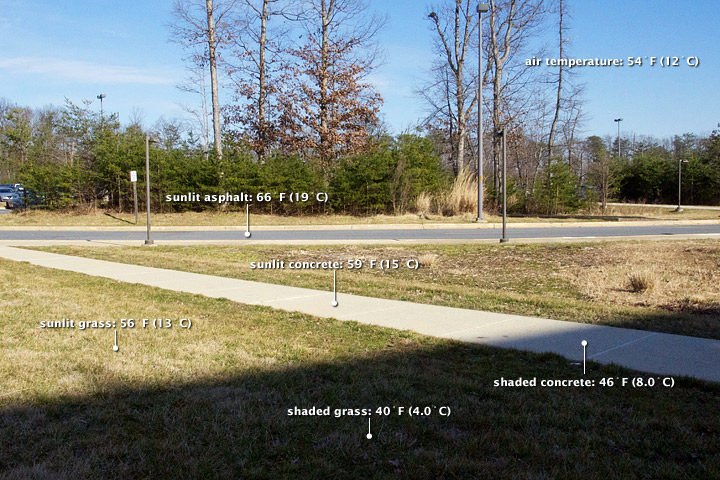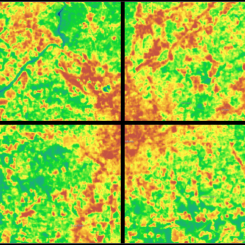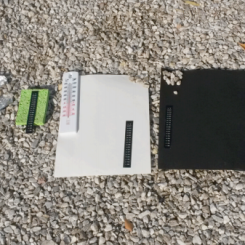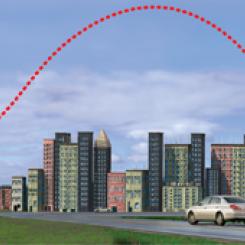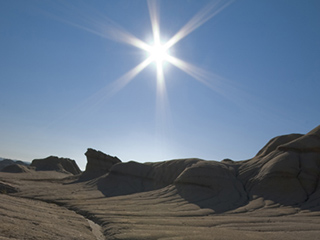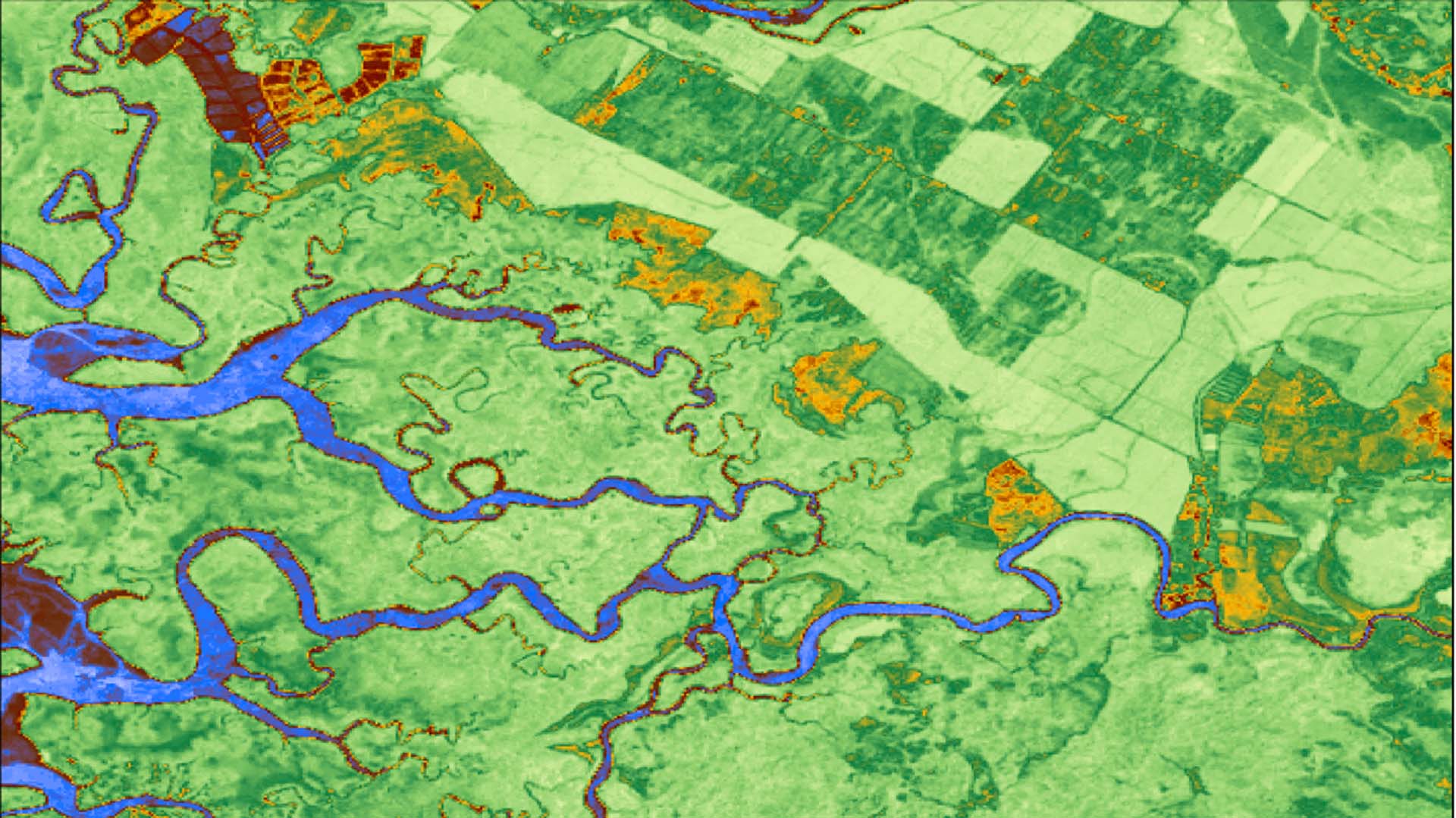Urban Heat Islands
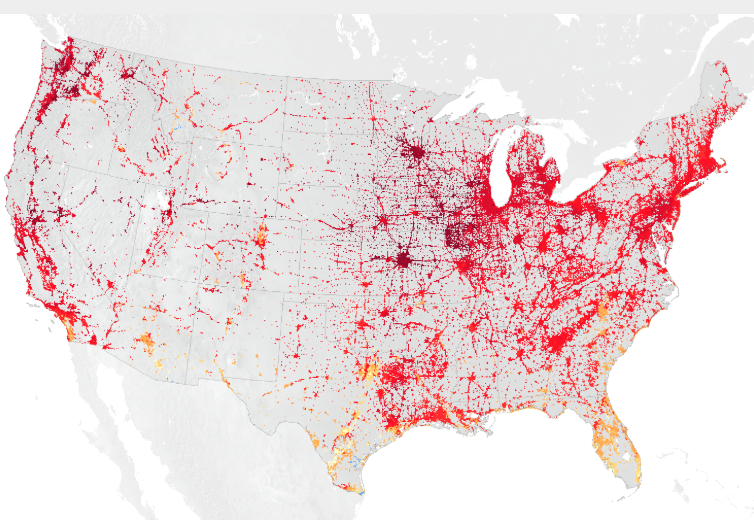
What Are Urban Heat Islands?
An urban heat island is a phenomenon that is best described when a city experiences much warmer temperatures than in nearby rural areas. The sun’s heat and light reach the city and the country in the same way. The difference in temperature between urban and less-developed rural areas has to do with how well the surfaces in each environment absorb and hold heat.
What is the Earth's Energy Budget?
Shown here is a diagram displaying Earth's Energy Balance. To understand what is happening in the diagram, let's start with the radiation emitted by the Sun, represented by the yellow arrows. Radiation from the Sun can be absorbed or reflected. This is why some of the yellow arrows point right back to space, showing reflection. About 50% of the radiation from the sun that reaches the Earth is absorbed by the surface.
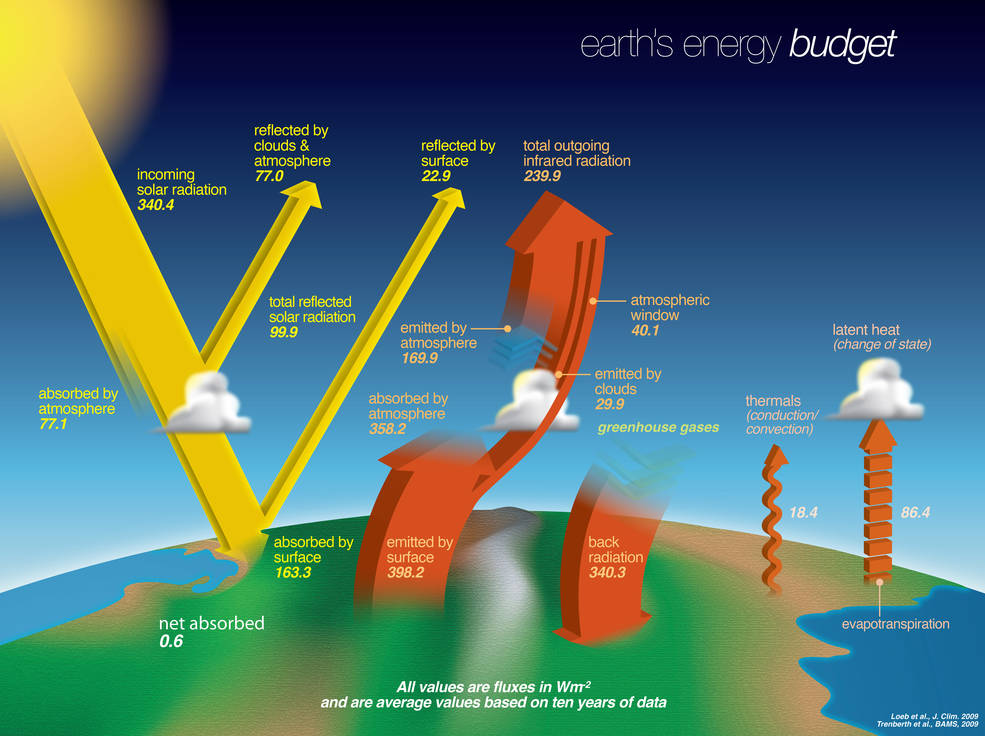
The surface absorbs the Sun's radiation and gains energy, warming the surface. The surface eventually releases some of this energy to the atmosphere above. Much of the energy is released as infrared radiation, which is detected as heat, like the warmth felt from a fire. This is shown by the red arrows. As the temperature of a surface warms, it will release more infrared radiation, regardless of what materials make up the object.
Another way that energy is released from the surface is through conduction and convection, shown by the curvy purple arrow. Conduction transfers heat to cooler air that directly touches the hot surface. Convection occurs when air warmed by the surface rises upward, moving heat away from the surface. Convection from hot pavement is the reason that the air above a hot road on a summer day appears to shimmer. Both convection and conduction remove energy from the surface faster when the surface is much warmer than the air above.
A third way by which energy is transferred from Earth's surface is through evaporation, which is shown by the dashed purple arrow. Evaporation is the changing of liquid water to an invisible gas called water vapor. This change requires energy, and evaporation is the reason that you cool off when you sweat. The surface of the Earth also "sweats". When water evaporates from Earth's surface, it transfers energy away from the surface, keeping it cool.
Earth's energy is often referred to as a "budget" or "balance". This is because the Earth is always releasing the same amount of energy that it is gaining. The processes of conduction, convection, infrared radiation, and evaporation are all responsible for this balance. When something changes to throw off the balance, some of all of these processes respond.
| At the Earth's Surface: | |
| + Sunlight Absorbed | |
| - Infrared Radiation | |
| - Conduction/Convection | |
| - Evaporation | |
| __________________________ | |
|
= 0
|
What is Albedo and How is it Related to Energy?
Part of the reason for differences in surface temperature over different types of surfaces comes from differences in Albedo. As mentioned on the previous slide, some materials reflect more sunlight than others. This has a lot to do with the color of the surface. Have you ever noticed that you get hotter outside in the summer when you wear black and you feel cooler when you wear white? This is the effect of Albedo.
Albedo indicates what percentage of the incoming solar radiation (sunlight) is reflected by a surface. The less albedo a surface has, the more energy contained in solar radiation (sunlight) is getting absorbed. So if the moon has an albedo of 6%, that means 6% of the incoming solar energy that reaches the moon's surface is reflected and the other 94% of the energy is absorbed by the surface.
How do Plants Affect Urban Heat Islands?
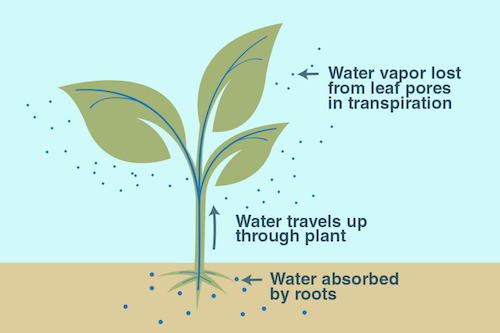
Credit: NASA JPL/Caltech
Plants take up water from the ground through their roots. Then, they store the water in their stems and leaves. The water eventually travels to small holes on the underside of leaves. There, the liquid water turns into water vapor and is released into the air. This process is called transpiration. By releasing water, plants cool themselves and the surrounding environment. Like how sweat cools the human body, energy is absorbed and transported away from a warm object by the evaporation of water. When solar energy is absorbed by plants, much of the energy is released by transpiration instead of warming the plant and increasing convection and infrared radiation release. Also, over a forest canopy or a vast expanse of grassland, large amounts of transpiration can greatly increase water vapor in the atmosphere, causing more precipitation and cloud cover in an area. The additional cloud cover often reinforces the cooling by blocking sunlight.
Where Do Urban Heat Islands Form?
The hottest places on Earth have a few traits in common. They are full of rock and stone, they do not have a lot of water, plants, or trees, and they are full of dark colors.
Cities are full of these rocky surfaces — asphalt, brick, and concrete — that absorb heat by day and release it at night. These materials are used to make the sidewalks, parking lots, roads, and basketball courts of urban areas. Urban heat islands form because humans replace cooler surfaces with rocky surfaces.
These hard and dark-colored surfaces contribute to the urban heat island effect in two ways. First, these surfaces have a low albedo, which increases the amount of energy from solar radiation they absorb. Second, these surfaces do not contain much water to evaporate, meaning that less of the absorbed energy evaporates water, and more goes into warming the surface and releasing energy by conduction, convection, or radiation. The combination of these factors means that cities and other highly developed areas are hotter than the plant-covered countryside.
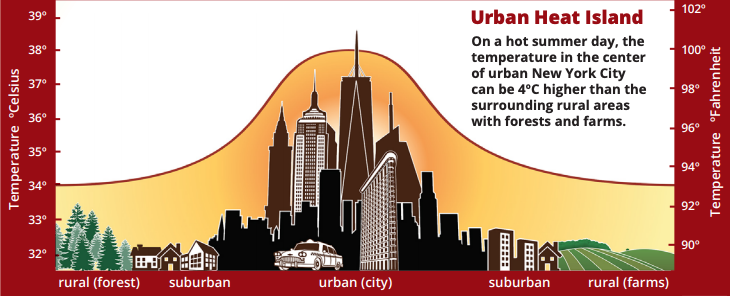
Urban areas often see temperatures rise 6°C (10°F) hotter than the surrounding suburbs and rural areas. Cities tend to be hotter than their surrounding areas at all times of the day and at all times of the year. However, a variety of factors influence the urban heat island. Bigger cities tend to have stronger heat-trapping capacities than smaller cities. Cities surrounded by forest have more pronounced heat islands than do cities in arid environments, since replacing forests with paved surfaces in urban areas has much more of a warming effect than replacing dry sand and rock with pavement.
Why are Urban Heat Islands a Problem?
Urban heat islands are one of the easiest ways to see how human impact can change our planet. Sidewalks, parking lots and skyscrapers wouldn’t exist if humans weren’t there to build them. And although these structures are essential to city living, the heat islands they create can be dangerous for humans.
In the summer, New York City is about 7°F (4°C) hotter than its surrounding areas. That doesn’t seem like much, but these higher temperatures can cause people to become dehydrated or suffer from heat exhaustion. The hot temps also require more energy to operate fans and air conditioners. This can lead to power outages and a serious danger to public health.

Credit: NASA Earth Observatory image by Joshua Stevens, using data from Bounoa, et al. (2015)
Disciplinary Core Ideas:
Crosscutting Concepts:
- Cause and Effect


